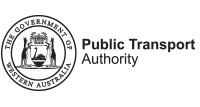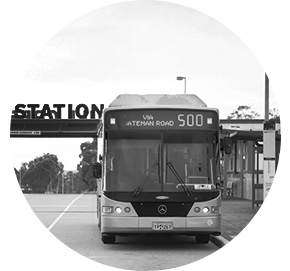- Home
- Financials
- Notes to the financial statements
- Disclosure of changes in accounting policy and estimates
Disclosure of changes in accounting policy and estimates
Initial application of an Australian Accounting Standard
The PTA has applied the following Australian Accounting Standards effective for annual reporting periods beginning on or after 1 July 2013 that impacted on the PTA.
| AASB 13 | Fair Value Measurement This Standard defines fair value, sets out a framework for measuring fair value and requires additional disclosures for assets and liabilities measured at fair value. There is no financial impact. |
| AASB 119 | Employee Benefits This Standard supersedes AASB 119 (October 2010), making changes to the recognition, presentation and disclosure requirements. The PTA assessed employee leave patterns to determine whether annual leave is a short-term or other long-term employee benefit. The resultant discounting of annual leave liabilities that were previously measured at the undiscounted amounts is not material. |
| AASB 1048 | Interpretation of Standards This Standard supersedes AASB 1048 (June 2012), enabling references to the Interpretations in all other Standards to be updated by reissuing the service Standard. There is no financial impact. |
| AASB 2011-8 | Amendments to Australian Accounting Standards arising from AASB 13 [AASB 1, 2, 3, 4, 5, 7, 9, 2009-11, 2010-7, 101, 102, 108, 110, 116, 117, 118, 119, 120, 121, 128, 131, 132, 133, 134, 136, 138, 139, 140, 141, 1004, 1023 & 1038 and Int 2, 4, 12, 13, 14, 17, 19, 131 & 132] This Standard replaces the existing definition and fair value guidance in other Australian Accounting Standards and Interpretations as the result of issuing AASB 13 in September 2011. There is no financial impact. |
| AASB 2011-10 | Amendments to Australian Accounting Standards arising from AASB 119 (September 2011) [AASB 1, 8, 101, 124, 134, 1049 & 2011-8 and Int 14] This Standard makes amendments to other Australian Accounting Standards and Interpretations as a result of issuing AASB 119 in September 2011. The resultant discounting of annual leave liabilities that were previously measured at the undiscounted amounts is not material. |
| AASB 2012-2 | Amendments to Australian Accounting Standards – Disclosures – Offsetting Financial Assets and Financial Liabilities [AASB 7 & 132] This Standard amends the required disclosures in AASB 7 to include information that will enable users of an entity’s financial statements to evaluate the effect or potential effect of netting arrangements, including rights of set-off associated with the entity’s recognised financial assets and recognised financial liabilities, on the entity’s financial position. There is no financial impact. |
| AASB 2012-5 | Amendments to Australian Accounting Standards arising from Annual Improvements 2009-11 Cycle [AASB 1, 101, 116, 132 & 134 and Int 2] This Standard makes amendments to the Australian Accounting Standards and Interpretations as a consequence of the annual improvements process. There is no financial impact. |
| AASB 2012-6 | Amendments to Australian Accounting Standards – Mandatory Effective Date of AASB 9 and Transition Disclosures [AASB 9, 2009-11, 2010-7, 2011-7 & 2011-8] This Standard amends the mandatory effective date of AASB 9 Financial Instruments to 1 January 2015 (instead of 1 January 2013). Further amendments are also made to numerous consequential amendments arising from AASB 9 that will now apply from 1 January 2015. There is no financial impact. |
| AASB 2012-9 | Amendment to AASB 1048 arising from the Withdrawal of Australian Int 1039 The withdrawal of Int 1039 Substantive Enactment of Major Tax Bills in Australia has no financial impact for the PTA during the reporting period and at balance date. Measurement of tax assets and liabilities continues to be measured in accordance with enacted or substantively enacted tax law pursuant to AASB 112.46-47. |
| AASB 2012-10 | Amendments to Australian Accounting Standards – Transition Guidance and Other Amendments [AASB 1, 5, 7, 8, 10, 11, 12, 13, 101, 102, 108, 112, 118, 119, 127, 128, 132, 133, 134, 137, 1023, 1038, 1039, 1049 & 2011-7 and Int 12]. The Standard introduces a number of editorial alterations and amends the mandatory application date of Standards for not-for-profit entities accounting for interests in other entities. There is no financial impact. |
| AASB 2013-9 | Amendments to Australian Accounting Standards – Conceptual Framework, Materiality and Financial Instruments. Part A of this omnibus Standard makes amendments to other Standards arising from revisions to the Australian Accounting Conceptual Framework for periods ending on or after 20 December 2013. Other Parts of this Standard become operative in later periods. There is no financial impact for Part A of the Standard. |
Future impact of Australian Accounting Standards not yet operative
The PTA cannot early adopt an Australian Accounting Standard unless specifically permitted by TI 1101 Application of Australian Accounting Standards and Other Pronouncements. Consequently, the PTA has not applied early any of the following Australian Accounting Standards that have been issued that may impact the PTA. Where applicable, the PTA plans to apply these Australian Accounting Standards from their application date.
Operative for reporting periods beginning on/after
| Int 21 | Levies This Interpretation clarifies the circumstances under which a liability to pay a government levy imposed should be recognised. There is no financial impact for the PTA at reporting date. | 1 Jan 2014 |
| AASB 9 | Financial Instruments This Standard supersedes AASB 139 Financial Instruments: Recognition and Measurement, introducing a number of changes to accounting treatments. The mandatory application date of this Standard was amended to 1 January 2018 by AASB 2014-1 Amendments to Australian Accounting Standards. The PTA has not yet determined the application or the potential impact of the Standard. | 1 Jan 2018 |
| AASB 10 | Consolidated Financial Statements This Standard, issued in August 2011, supersedes AASB 127 Consolidated and Separate Financial Statements and Int 112 Consolidation – Special Purpose Entities, introducing a number of changes to accounting treatments. Mandatory application was deferred for not-for-profit entities by AASB 2012-10 Amendments to Australian Accounting Standards – Transition Guidance and Other Amendments. The adoption of the new Standard has no financial impact for the PTA as it doesn’t impact accounting for related bodies and the PTA has no interests in other entities. | 1 Jan 2014 |
| AASB 11 | Joint Arrangements This Standard, issued in August 2011, supersedes AASB 131 Interests in Joint Ventures, introduces new principles for determining the type of joint arrangement that exists, which are more aligned to the actual rights and obligations of the parties to the arrangement. Mandatory application of the Standard was deferred for not-for-profit entities by AASB 2012-10. There is no financial impact for the PTA as the new standard continues to require the recognition of the PTA’s share of assets and share of liabilities for the unincorporated joint operation. | 1 Jan 2014 |
| AASB 12 | Disclosure of Interests in Other Entities This Standard, issued in August 2011, supersedes disclosure requirements under AASB 127 Consolidated and Separate Financial Statements, AASB 128 Investments in Associates and AASB 131 Interests in Joint Ventures. Mandatory application was deferred for not-for-profit entities by AASB 2012-10. There is no financial impact. | 1 Jan 2014 |
| AASB 14 | Regulatory Deferral Accounts The PTA has not yet determined the application of the potential impact of the Standard. | |
| AASB 127 | Separate Financial Statements This Standard, issued in August 2011, supersedes AASB 127 Consolidated and Separate Financial Statements, removing the consolidation requirements of the earlier standard whilst retaining accounting and disclosure requirements for the preparation of separate financial statements. Mandatory application was deferred for not-for-profit entities by AASB 2012-10. There is no financial impact. | 1 Jan 2014 |
| AASB 128 | Investments In Associates and Joint Ventures This Standard supersedes AASB 128 Investments in Associates, introducing a number of clarifications for the accounting treatments of changed ownership interest. Mandatory application was deferred for not-for-profit entities by AASB 2012-10. The adoption of the new Standard has no financial impact for the PTA as it doesn’t hold investments in associates or and the accounting treatments for joint operations is consistent with current practice. | 1 Jan 2014 |
| AASB 1031 | Materiality This Standard supersedes AASB 1031 (February 2010), removing Australian guidance on materiality not available in IFRSs and refers to guidance on materiality in other Australian pronouncements. There is no financial impact. | 1 Jan 2014 |
| AASB 1055 | Budgetary Reporting This Standard requires specific budgetary disclosures in the general purpose financial statements of not-for-profit entities within the General Government Sector. The PTA will be required to disclose additional budgetary information and explanations of major variances between actual and budgeted amounts, though there is no financial impact. | |
| AASB 2009-11 | Amendments to Australian Accounting Standards arising from AASB 9 [AASB 1, 3, 4, 5, 7, 101, 102, 108, 112, 118, 121, 127,128, 131, 132, 136, 139, 1023 & 1038 and Int 10 & 12] [modified by AASB 2010-7] | 1 Jan 2015 |
| AASB 2010-7 | Amendments to Australian Accounting Standards arising from AASB 9 (December 2010) [AASB 1, 3, 4, 5, 7, 101, 102, 108, 112, 118, 120, 121, 127, 128, 131, 132, 136, 137, 139, 1023 & 1038 and Int 2, 5, 10, 12, 19 & 127] This Standard makes consequential amendments to other Australian Accounting Standards and Interpretations as a result of issuing AASB 9 in December 2010. AASB 2012-6 amended the mandatory application date of this Standard to 1 January 2015.The PTA has not yet determined the application or the potential impact of the Standard. | 1 Jan 2015 |
| AASB 2011-7 | Amendments to Australian Accounting Standards arising from the Consolidation and Joint Arrangements Standards [AASB 1, 2, 3, 5, 7, 101, 107, 112, 118, 121, 124, 132, 133, 136, 138, 139, 1023 & 1038 and Int 5, 9, 16 & 17] This Standard gives effect to consequential changes arising from the issuance of AASB 10, AASB 11, AASB 127 Separate Financial Statements and AASB 128 Investments in Associates and Joint Ventures. For not-for-profit entities it applies to annual reporting beginning on or after 1 January 2014. The PTA has not yet determined the application or the potential impact of the Standard. | 1 Jan 2013 |
| AASB 2012-3 | Amendments to Australian Accounting Standards – Offsetting Financial Assets and Financial Liabilities [AASB 132] This Standard adds application guidance to AASB 132 to address inconsistencies identified in applying some of the offsetting criteria, including clarifying the meaning of “currently has a legally enforceable right of set-off” and that some gross settlement systems may be considered equivalent to net settlement. There is no financial impact. | 1 Jan 2014 |
| AASB 2013-3 | Amendments to AASB 136 – Recoverable Amount Disclosures for Non-Financial Assets. This Standard introduces editorial and disclosure changes. There is no financial impact. | 1 Jan 2014 |
| AASB 2013-4 | Amendments to Australian Accounting Standards – Novation of Derivatives and Continuation of Hedge Accounting [AASB 139] This Standard permits the continuation of hedge accounting in circumstances where a derivative, which has been designated as a hedging instrument, is novated from one counterparty to a central counterparty as a consequence of laws or regulations. The PTA does not routinely enter into derivatives or hedges, therefore there is no financial impact. | 1 Jan 2014 |
| AASB 2013-8 | Amendments to Australian Accounting Standards – Australian Implementation Guidance for Not-for-Profit Entities – Control and Structured Entities [AASB 10, 12 & 1049]. The amendments, issued in October 2013, provide significant guidance in determining whether a not-for-profit entity controls another entity when financial returns are not a key attribute of the investor’s relationship. The Standard has no financial impact in its own right, rather the impact results from the adoption of the amended AASB 10. | 1 Jan 2014 |
| AASB 2013-9 | Amendments to Australian Accounting Standards – Conceptual Framework, Materiality and Financial Instruments. This omnibus Standard makes amendments to other Standards arising from the deletion of references to AASB 1031 in other Standards for periods beginning on or after 1 January 2014 (Part B), and, defers the application of AASB 9 to 1 January 2017 (Part C). The application date of AASB 9 was subsequently deferred to 1 January 2018 by AASB 2014-1. The PTA has not yet determined the application or the potential impact of AASB 9, otherwise there is no financial impact for Part B. | 1 Jan 2014 1 Jan 2017 |
| AASB 2014-1 | Amendments to Australian Accounting Standards. The PTA has not yet determined the application or the potential impact of the Standard. |
1 Jul 2014 1 Jan 2015 1 Jan 2016 1 Jan 2018 |


